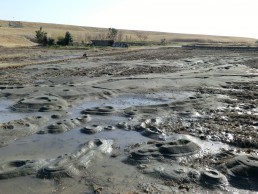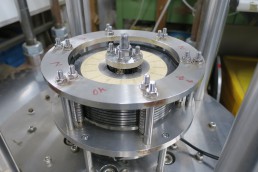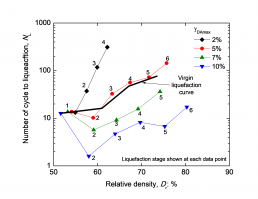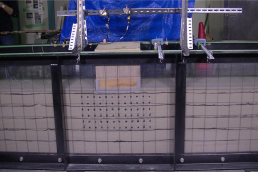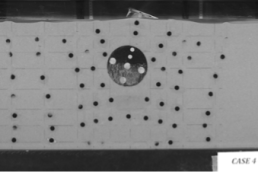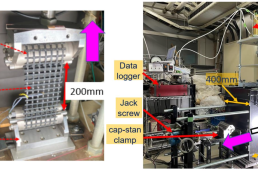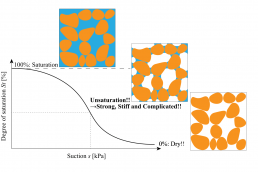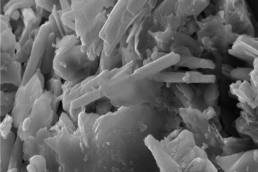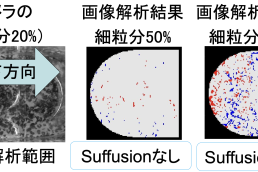What happen on the 2nd earthquake?
What happen on the 2nd earthquake? Liquefaction occurs again? We have investigated soil liquefaction and established the estimation method of ground and the prediction method of ground behavior in general geotechnical engineering. However, it seems to be still difficult to consider the 2nd liquefaction and its effect. It would be impossible to reproduce the 2nd liquefaction in a typical element test apparatus (triaxial test, torsional shear and etc.), since the condition of sample after 1 st liquefaction is not homogeneous due to the limitation of experiment , and such an inhomogeneity must affect a subsequent behavior.
We have developed a new experiment apparatus: a Stacked Ring Simple Shear Apparatus (See Photo). Each ring rotate with a deformation of sample and support the sample even in liquefaction, thus 2 nd liquefaction test can be conducted subsequently with homogeneous sample.
This figure is results of liquefaction test using the proposed apparatus. It can be seen that large liquefaction history(large γDAmax) makes sand likely to cause next liquefaction. This result suggests that not only density but also liquefaction history should be considered to predict next liquefaction.
More Details...
1)Wahyudi, Seto, et al. “Multiple-Liquefaction Behavior of Sand in Cyclic Simple Stacked-Ring Shear Tests.” International Journal of Geomechanics 16.5 (2015): C4015001.
2)Wahyudi, Seto, et al. “Development of Stacked-Ring Shear Apparatus for Multiple Liquefactions Tests.” Proc. of the Six International Symposium on Deformation Characteristics of Geomaterials. 2015.
3)青柳悠大, et al. “大小様々な液状化ひずみ履歴を与えた複数回液状化試験と消散エネルギーを用いた分析.” 土木学会論文集 A1 (構造・地震工学) 72.4 (2016): I_167-I_176.
